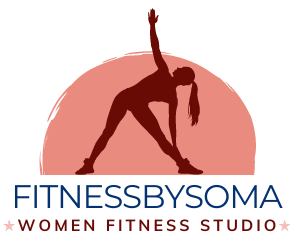You know that annoying pain in your lower legs that never seems to get better? This leg pain always seems to slow your training just when you are starting to make some real gains. This group of lower leg injuries commonly referred to as “shin splints” is one of the most commonly occuring injuries in active people.
Unfortunately most people land up buying the wrong kind of athletic shoes and this does not help their condition at all more so aggravate it in some cases. The good news is that shin splits can be avoided or reduced to quite an extent with proper shoe selection.
The trick here is to know the characteristics of your feet. We normally come across the term flat foot or abnormally high arch. knowing this information is very important beacuse most of what we need in an athletic shoe revovles around our arch type.
below are the explanations:
A flat foot, commonly referred to as a pronated foot, is characterized by excessive motion. That means the foot is loose and “gives” too much under the weight of the body, thus appearing flat when bearing weight.
A high arch foot, commonly called a supinated foot, has it’s own associated problems. A supinated foot is a rigid foot, and a poor shock absorber. As such, excess forces of movement get transferred up the leg to be absorbed by some other body part, in this case the bones of the lower leg.
A neutral (normal) foot is a middle ground between the pronated and supinated foot. This foot type is the biomechanically correct foot and is not prone to either type of shin splint specifically, but symptoms may persist.
Chances are, if you have never heard one way or the other which foot type you have then you are neutral.
Now comes the section how do we select shoes as per our feet type?
here goes:
If you are flat-footed, you want a shoe that controls the motion of your foot. Remember that a flat foot undergoes excessive motion. To combat this problem, you look for a shoe sole that is rigid from the base of the toes (usually the widest part of the sole) to the heel. You also want a good, solid heel cup. This is the region of the shoe the cups and stabilizes the heel above the sole.This combination acts as a brace for the foot, holding it in the neutral position and preventing pronation. How do you check a shoe for these characteristics? You have to get your hands on it! Squeeze the heel cup area above the sole. Is it firm or spongy? With one hand, hold the rear of the sole and place the other on the widest part of the sole near the base of the toes. Give it a good twist! Bend it! Did it feel solid or spongy?
In this case sneakers with motion control are best. Motion control gives the shoe a higher degree of stability, which resists foot pronation. Excessive pronation, where the arch and ankle roll inward and the foot splays outward while walking, can lead to problems such as tendonitis, plantar fasciitis, and knee problems.
If you have flat feet, you want the shoe to be firm in these key areas, but still flexible in the toes. This will maintain the integrity of the arch of the foot, thus reducing the forces on the tibialis posterior muscle during exercise. This will relieve the tendency for the tibialis posterior to begin tearing away from its tibial attachment (see above), saving a lot of pain and lost training.
What if you have a high arch? You already have a rigid foot, so you have no need for motion control. What you need is shock absorption. If your tendency is for hairline fractures of the tibia because of excessive force transferred through the foot, then you need to absorb some of that impact force with your shoe.
Stability Shoes — Stability athletic shoes are simply sneakers that offer good support, but have less control over foot motion than a motion control shoe does. A stability shoe would be a good choice for feet that don’t over-pronate or require extra support. They are usually preferred by anyone who likes a little flexibility in their shoes rather than rigid, stiff-soled styles. New Balance, Adidas, and Nike are three companies that use the term ‘stability’ in their shoe categories.
Cushioned Shoes — These styles are meant to accommodate those who prefer shoes that absorb shock. They are less rigid and have less control than other styles, so they may be easier to flex in half or twist. These may not be the best choice for over-pronators or anyone with any kind of foot or ankle instability. People who have rigid, high-arched feet may find these styles more comfortable. If you have a tendency to sprain your ankles, be aware that a thicker, narrower sole may increase the risk of a sprain. This was a common problem with curved toning shoes, which offered a lot of cushioning, but increased instability in the foot and ankle.
The one characteristic that ALL athletic shoes should possess is a flexible toe region. This prevents overworking the Gastro-soleus complex (the calf) during activity and opening yourself up to a whole different catagory of athletic injury.
So how can you find out what type of foot you have? Here is one of the easiest ways to find out. With no shoes or socks on, get your feet wet. Now take a few steps, and take a look at your footprints. Compare your footprint to the diagram given. Understand that most people are somewhere in between the two extremes. Use your best judgement to gauge where you fall on the bell curve.
It is important to keep in mind that this information is useful for ALL active people, and not just those who commonly experience shin splints. Following these principles of shoe selection will help prevent, not just cure these lower leg injuries to you.
Best of Luck!



Recent Comments